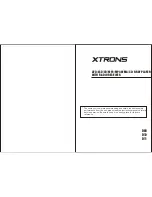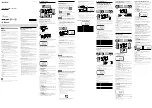
System Functions and Features as of I7.9
Routing elements
79
sy
d-
020
0/3.
0
– I7.
9
– 1
1
.2009
Tip:
It is a good idea to name trunk groups according to the origin of their
lines (e.g. "Public ISDN", "Analogue", "Leased Line Geneva", etc.). This
ensures greater clarity during configuration work.
Generating a Ring-back Tone
With the settings outgoing
call, ring-back tone
and
incoming call, ring-back tone
the
system is able to control, within certain limitations, the generation of the ring-back
tone on digital trunk connections. These settings do not have to be altered in nor-
mal PBX operation.
•
In the case of a stand-alone PBX on the public network the ring-back tone is sup-
plied by the local exchange and does not have to be generated by the PBX.
•
In a PISN with QSIG networking the ring-back tone always has to be generated in
the destination PINX. In this case the setting
Incoming call, ring-back tone
=
Gen-
erate
is set permanently and cannot be altered.
Here are two applications in which the settings do have to be adapted:
•
In a PISN with networking via DSS1 protocol the ring-back tone is normally also
generated in the destination PINX (
Incoming call, ring-back tone
=
Generate
)
There are however exceptions (e.g. PBX integrated in Centrex
1)
) where the ring-
back tone does not have to be generated internally. In such cases select the set-
ting
Incoming call, ring-back tone
=
Do not generate
.
•
It is possible that the destination does not generate a ring-back tone. (e.g. exter-
nal IP gateways). In such cases it is possible to generate the ring-back tone lo-
cally. To do so, select the setting
Outgoing call, ring-back tone
=
Generate
.
Note:
If several PINXs are cascaded, generate the ring-back tone only once
whenever possible and as close to the called user as possible.
Rerouting in the Exchange
The
Rerouting in the exchange
setting can be used to specify whether the system is
authorized to place exchange-to-exchange connections to the exchange via the
trunk group’s exchange lines. If the exchange lines of two trunk groups are in-
volved, this connection privilege must be granted to both trunk groups (see also
"Transferring Call Forwarding Unconditional to the Exchange", page 206
).
This setting is possible only for trunk groups with
Protocol
=
DSS1
.
1)
depends on the network provider
















































